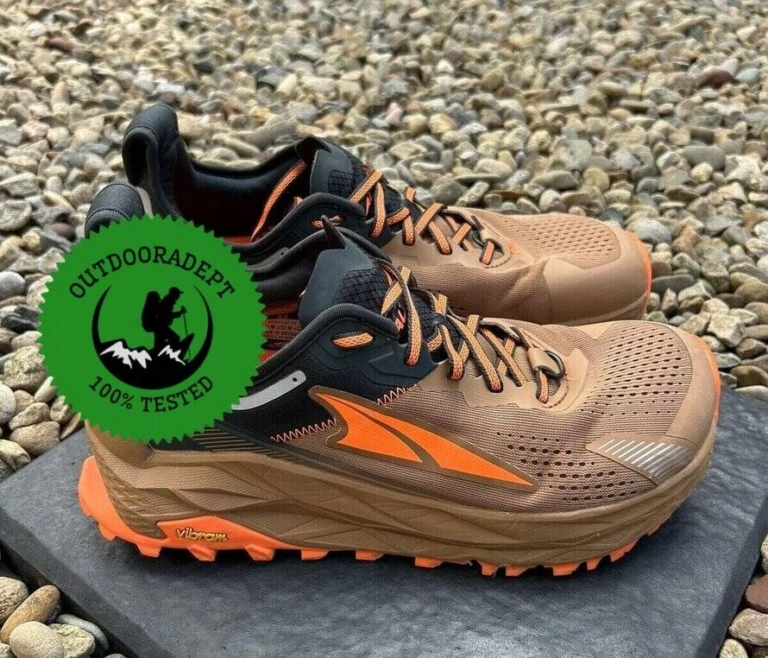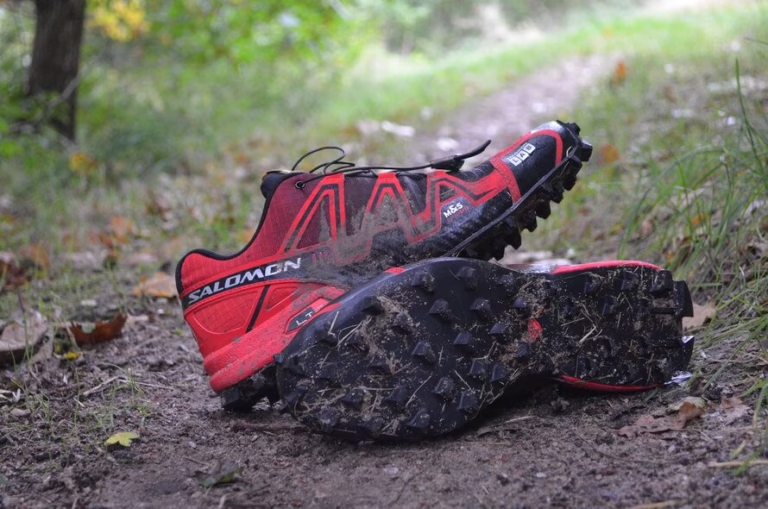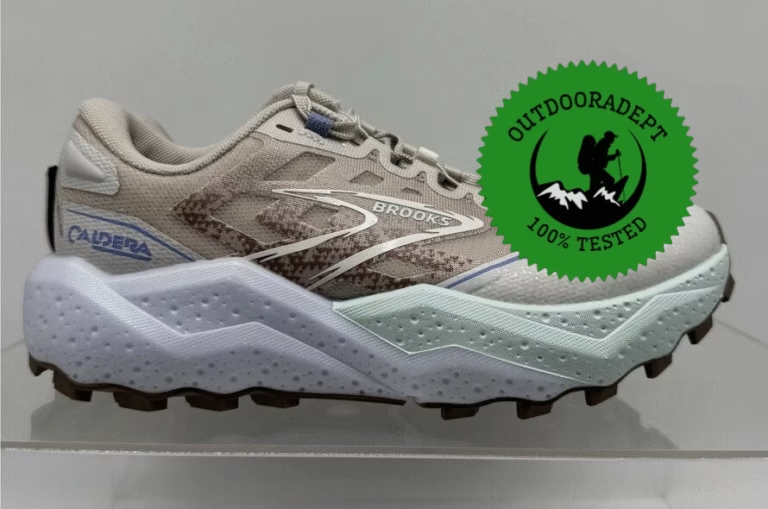I tested the Saucony Peregrine 15 on the Buffalo River Trail in Arkansas, a route known for technical terrain and changing conditions.
This version features softer PWRRUN foam in the midsole for better impact absorption and a PWRTRAC rubber outsole with 5mm lugs for grip on tough surfaces.
Key highlights were the roomy toe box and agile feel on tricky trails, though there was some heel rubbing initially.
Here’s the full review based on real trail miles.
Our Verdict 4.4/5
The Saucony Peregrine 15 emerges as a strong contender for runners seeking a versatile trail running shoe that handles technical areas and moderate distances with ease.
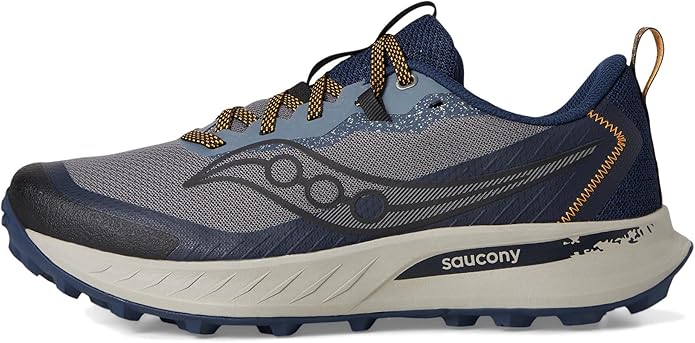
It offers a softer feel than the previous version thanks to the PWRRUN midsole, and its rubber outsole grabs onto gravel, concrete, and rocky slopes surprisingly well.
Despite offering more plushness, it’s still a bit more lightweight than some competing cushioned models, like the Hoka Speedgoat 6.
The trade-off I noted is slightly less protection on extremely rocky segments and a minor slip in grip if you encounter thick mud, but overall, I had an exciting time with these shoes.
To provide a comprehensive review of the Saucony Peregrine 15, we conducted extensive testing across diverse terrains, including flat trails, rocky paths, muddy tracks, and gravel roads. We evaluated its water resistance in wet conditions and its performance in high temperatures. Our team, along with external experts, carefully assessed the shoe’s break-in period and overall comfort. Key elements such as fit, cushioning, tread grip, and breathability were thoroughly examined. We also included user feedback and reviewed the manufacturer’s warranty to deliver a well-rounded evaluation of the Peregrine 15.
Highlights
| Feature | Saucony Peregrine 15 |
|---|---|
| Weight | ~9.7 oz (approx. 275 g) per pair (men’s size 9) |
| Water Resistance | Non-waterproof; breathable mesh upper |
| Traction | PWRTRAC rubber outsole with 5mm lugs; excellent grip on varied terrains |
| Comfort | PWRRUN foam midsole; soft cushioning with moderate responsiveness |
| Adjustability | Traditional lacing system; secure fit |
| Breathability | Engineered mesh upper; good airflow |
| Durability | Reinforced upper; solid outsole; minor wear after 80+ miles |
| Arch Support | Moderate; suitable for neutral to slightly overpronated runners |
| Toe Protection | Protective toe cap; adequate for most trail conditions |
Pros & Cons
PROS
CONS
Things We Tested When We Reviewed Saucony Peregrine 15
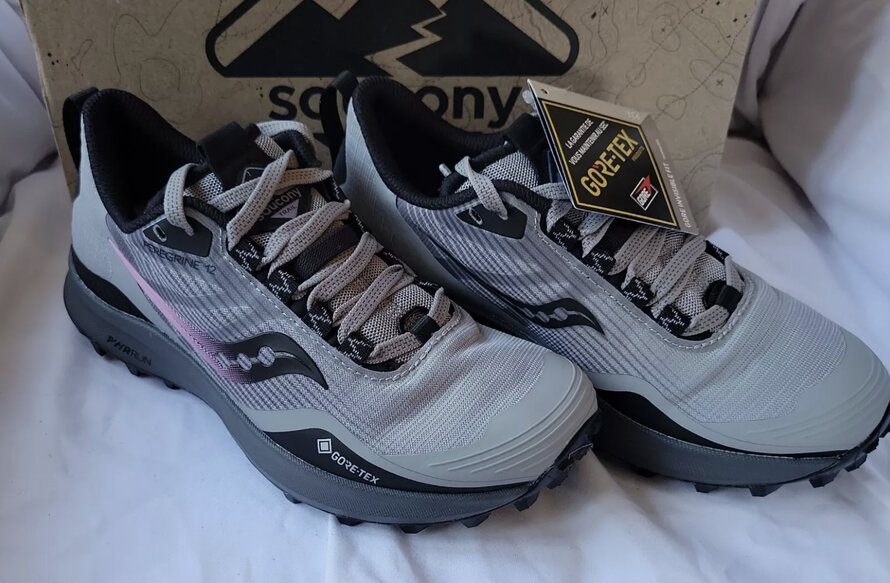
1) Durability
When I set out for my first few test runs in the Saucony Peregrine 15, I pushed through miles of trail running, focusing on rocky ledges where high abrasion areas often cause early wear.
Thanks to the durable engineered mesh upper, reinforced with overlays, the trail shoe showed limited scuffing in typical contact zones.
The sole resisted heavy compression, indicating a solid lifespan. Meanwhile, the rubber outsole retained a strong shape, providing a good grip on both dirt and gravel.
After 80+ miles, I noticed only slight wearing on the forefoot edges—a common issue for me in many shoes. Overall, I would expect over 300-400 miles of staying true performance before the cushioned feel and traction start to diminish.
2) Traction
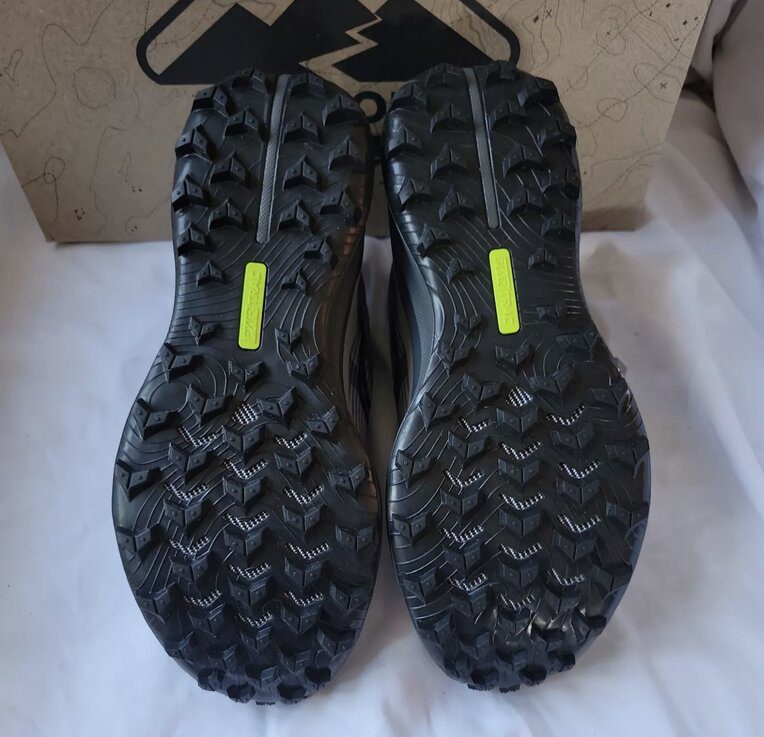
Saucony’s hallmark for challenging trails often comes down to enough grip and consistency, and this Peregrine running shoe does not disappoint.
The newly designed 5mm lugs on the outsole bite into soft ground and wet grass, offering confidence through slippery corners.
On gravel, the shoe felt stable, with minimal slippage when picking up speed.
The tough rubber compound showed a strong hold on roots, rocks, and modest slopes, though heavier mud can clog the lugs, reducing overall friction.
Still, for most trail conditions, this running shoe hits the sweet spot of traction and agility, meaning you can wear it in regular running conditions without a worry.
3) Weight
At around 9.7 oz for men’s size 9, this Saucony is on the lighter side for a cushioned trail shoe that aims to balance comfort with sturdy protection.
Being a bit lighter, the design allows for a snappier pace, reducing fatigue during moderate or long expeditions.
Although not in the ultra-light racing category, it’s certainly more agile than some road shoes that attempt to double as trail options, like the Nike Air Zoom Pegasus 39.
I wore it on multi-hour efforts, and that lower weight prevented undue strain when tackling lengthy ascents.
Compared to past versions, it sheds a smidge of heft thanks to the softer foam composition, making it an appealing choice for runners who want a strong, protective package without feeling weighed down on steep climbs.
4) Comfort
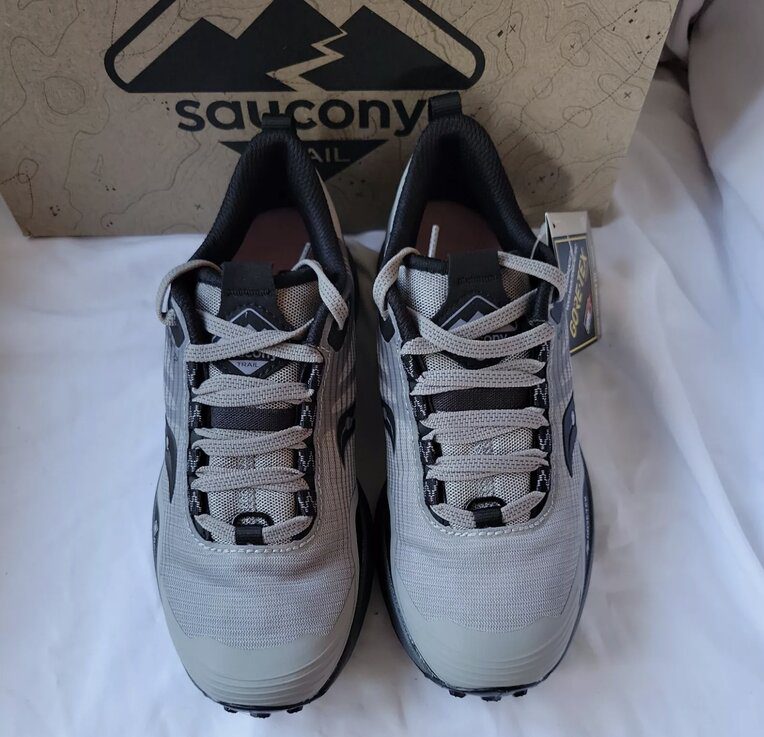
From the first few miles, the cushioned nature of the new midsole is evident, delivering a gentle underfoot experience without feeling mushy.
I appreciated the roomy toe box, which gave my toes space to splay out naturally, reducing the chance of blisters on technical descents.
The sock liner also contributes to the shoe’s softness, creating a close, accommodating wrap.
A slightly padded heel collar locks the foot in place well, though I did experience brief heel rubbing on day one—a common break-in quirk. Once the tongue and collar softened, any sense of friction disappeared.
If you typically seek more cushion in the forefoot, you’ll find that the Peregrine 15 remains balanced enough for reactive transitions, making it comfortable across varied terrain.
5) Breathability
Breathability plays a crucial role in trail runs, especially when temperatures climb. The mesh upper on the Peregrine 15 encourages airflow, preventing excess moisture buildup.
During a warm 10-mile run at around 80°F, my feet felt cool, and the shoes dried quickly after crossing a shallow stream.
While it’s not as airy as minimal trail racers, the new Peregrine running shoe effectively balances robust protection with solid ventilation. This improvement is noticeable if you’ve tried previous models that sometimes felt a tad stifling, even in the spring season.
6) Waterproofing
This model isn’t marketed as waterproof, but its quick-drying materials and sock liner do a respectable job of letting wet surfaces drain.
Running through shallow puddles or crossing streams will inevitably soak the upper, yet the upper helps release water quickly.
Over the same distances, the Peregrine shoe dried faster than some bulkier, water-resistant running shoes, ensuring you don’t slog through the miles.
If you consistently tackle muddy or wet conditions, the dedicated waterproof version of this shoe might be more appropriate, but for standard training in variable weather, the breezy construction offsets a lack of water resistance.
7) Fit and Sizing
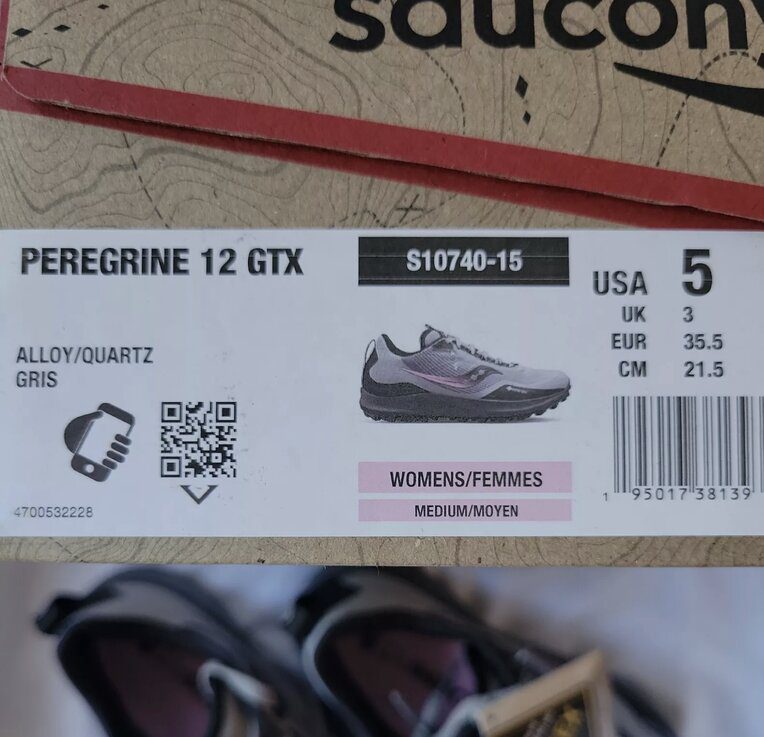
For me, this new iteration fits true to size. My usual size locked in nicely, with toes unencumbered by the roomy toe box.
The combination of the mesh upper and well-placed overlays gave a comfortable, yet supportive cradle around the forefoot and midfoot.
Runners with narrower feet might still appreciate the secure lacing system, which eliminates unwanted movement.
If you have extremely wide feet, you could consider going a half-size up for added space.
The tongue is gusseted but not overly thick, so it stays in place without pressing down on the foot. Anyone seeking a functional, balanced fit that suits varied terrain should find this trail shoe easy to settle into after minimal break-in.
8) Support
Overall stability in the Saucony Peregrine line has always been respectable, but the new model adds improvements. The midfoot lock feels dialed in, aided by a secure lacing system and a well-contoured sock liner.
While there is no dedicated plate to shield against rocks, the softer midsole still offers reliable shock absorption and enough protection on moderate terrain.
On tricky or loose surfaces, I found the sidewalls supportive enough to prevent wobbly footfalls. The moderate heel stack couples with a lightly padded heel collar for a snug, stable ride that handles mild pronation with ease.
If you carry a lot of weight or run with a heel-strike style, the Peregrine 15 offers enough structural heft to keep your stride controlled without showing stiffness.
Saucony Peregrine 15 Evolution
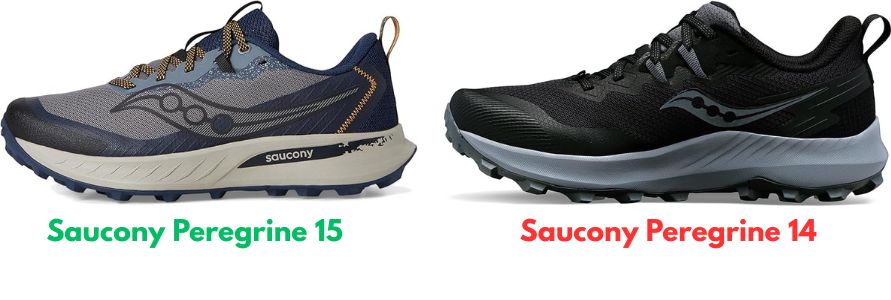
Compared to its previous version, the Saucony Peregrine 14, this new version introduces a more forgiving foam midsole for an overall bouncier sensation and better shock absorption, especially over longer runs.
The brand also updated the engineered mesh upper to be more durable while boosting breathability—addressing common concerns that the past models occasionally ran hot.
The redesigned rubber outsole features a revamped lug pattern, granting more grip on technical trails and smoother performance on gravel paths.
These upgrades enhance the Peregrine 15’s responsiveness, improving on the stiff, firmer ride that some runners observed in earlier iterations.
Saucony Peregrine 15 Competitors
When looking at specs for the Saucony Peregrine 15 alongside other popular running shoe options, its balance of lighter construction, comfort, and strong grip stands out.
Below are three comparisons to help you see exactly where this shoe outperforms or lags behind rival models.
Hoka Speedgoat 6

The Hoka Speedgoat 6 is lauded for its plush cushion and broad base. In direct comparison, the Peregrine shoe has a low drop geometry that offers a more connected ground feel, which can be beneficial on technical trails.
Both deliver similarly aggressive lugs for good grip across the terrain. However, the Speedgoat tends to have a roomier midfoot and can feel a bit more cushioned overall—some runners might find it more forgiving on extremely rocky routes.
The Peregrine 15 stands out as a good option for short to mid-distance trail races. The Speedgoat’s extra stack height may provide more cushion, but also adds weight, making the Peregrine 15 comparatively more nimble.
Craft Pure Trail X
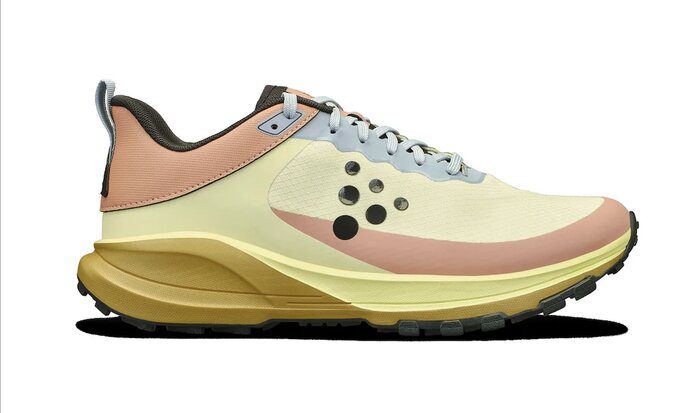
During testing, we observed that Craft Pure Trail X and this Saucony model have strong parallels in grip and stability.
Both shoes feature a low drop for controlled movement and an aggressive outsole that can handle loose or packed dirt.
The Craft Pure Trail X has a slightly narrower toe box and a firmer midsole, whereas the Peregrine 15 offers a softer sensation.
Craft’s model might favor those who want a more locked-in, traditional racing fit, but Saucony shoes are known for their comfortable, balanced design that accommodates a wider range of foot shapes.
Merrell Agility Peak 5
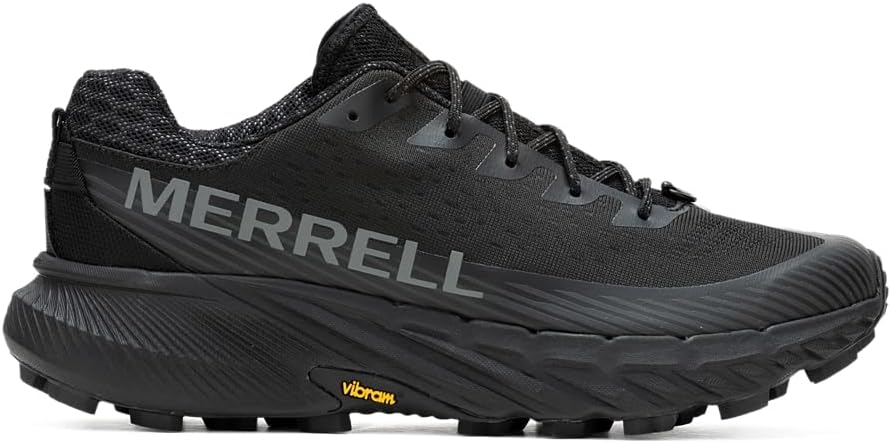
Merrell’s Agility Peak line has earned a reputation for near-unbeatable traction on rocky, rugged terrain, partly due to its full-coverage Vibram outsoles.
The difference is that the Peregrine line uses PERTRAC rubber—not Vibram—yet still manages impressive traction on steep climbs and downhills.
Where the Merrell might nudge ahead is on extremely brutal terrain, thanks to a robust rock plate and beefier build that offers extra protection underfoot. That can translate, of course, into a heftier, less agile response.
The Peregrine 15 picks up the slack if you want a bit more pep in your stride and a lighter overall package.
In direct tests, the Peregrine 15 performed admirably on both wet grass and rocky creek beds, though hardcore ultra runners tackling sharp, gnarly routes might prefer the Agility Peak’s more extreme coverage and stiffer chassis.
Saucony Peregrine 15 Strengths
If you love weaving through technical terrain with smaller rocks, roots, or loose surfaces, this trail running shoe delivers. Its 5mm lugs and PWRTRAC design ensure enough grip on wet creek beds and crumbling dirt, while the low drop geometry enables a natural stride.
On winding singletrack or moderately challenging terrain, it remains stable and encourages confidence at various pace levels. In my personal evaluations, I found the toe bumper protective enough to guard against minor bumps without adding bulk.
The combination of roomy toe compartments and a gentile midsole fosters longer, more comfortable outings—be it a casual weekend trek or a mid-distance trail race.
If your focus is all-around versatility with a dash of extra protection for rough corners, you’ll likely enjoy how this cushioned shoe handles on typical trail adventures.
Saucony Peregrine 15 Weaknesses
While this is a versatile trail running shoe, it’s not without flaws. The softer PWRRUN foam can feel a bit underpowered on deeply rocky paths where a rigid rock plate might offer more protection.
Additionally, the traction in packed snow left me wanting a little more bite, and mud can clog those 5mm lugs.
I also noticed slight heel chafing when I first tried the shoe, which lessened after a few miles but could bother sensitive runners. Those seeking a thoroughly cushioned style for ultra distances might feel the ride is not plush enough for truly brutal routes.
Overall, the Peregrine 15 nails moderate to tough terrain, but if you’re consistently tackling savage, rock-laden climbs or long, snowy slogs, you may find yourself craving a sturdier model or even a waterproof variant.
| WHERE TO BUY? | MEN | WOMEN |
| Amazon | See Pricing» | See Pricing» |
| Backcountry | See Pricing» | See Pricing» |
| REI | See Pricing» | See Pricing» |
FAQs
Yes. The Saucony Peregrine lineup, including the Peregrine 15, is generally considered a neutral trail running shoe, suitable for most runners who don’t require specialized motion control.
No. Saucony is an American brand with roots dating back over a century in Kutztown, Pennsylvania. Despite global manufacturing and distribution, Saucony shoes have long been recognized as a classic U.S.-based running brand.


